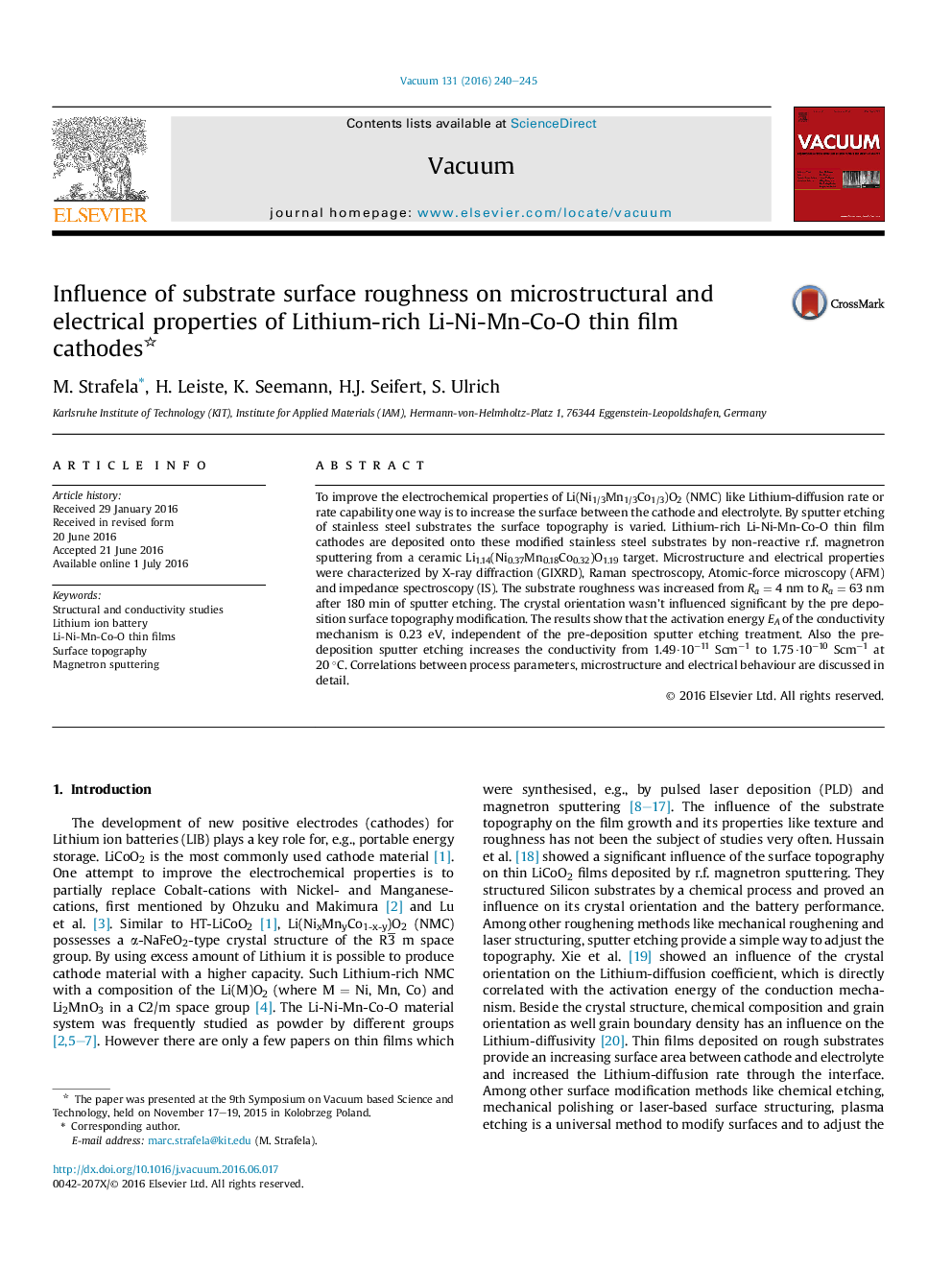| Article ID | Journal | Published Year | Pages | File Type |
|---|---|---|---|---|
| 1689673 | Vacuum | 2016 | 6 Pages |
•The substrate roughness was increased and adjusted by a pre-deposition etching process.•Lithium rich Li-Ni-Mn-Co-O films have been deposited on substrates with different surface topography.•The activation energy of the conduction mechanism was determined for Li-Ni-Mn-Co-O films.•The Microstructure and the activation energy is independent of the surface roughness.•The conductivity increases with increased and adjusted roughness.
To improve the electrochemical properties of Li(Ni1/3Mn1/3Co1/3)O2 (NMC) like Lithium-diffusion rate or rate capability one way is to increase the surface between the cathode and electrolyte. By sputter etching of stainless steel substrates the surface topography is varied. Lithium-rich Li-Ni-Mn-Co-O thin film cathodes are deposited onto these modified stainless steel substrates by non-reactive r.f. magnetron sputtering from a ceramic Li1.14(Ni0.37Mn0.18Co0.32)O1.19 target. Microstructure and electrical properties were characterized by X-ray diffraction (GIXRD), Raman spectroscopy, Atomic-force microscopy (AFM) and impedance spectroscopy (IS). The substrate roughness was increased from Ra = 4 nm to Ra = 63 nm after 180 min of sputter etching. The crystal orientation wasn’t influenced significant by the pre deposition surface topography modification. The results show that the activation energy EA of the conductivity mechanism is 0.23 eV, independent of the pre-deposition sputter etching treatment. Also the pre-deposition sputter etching increases the conductivity from 1.49·10−11 Scm−1 to 1.75·10−10 Scm−1 at 20 °C. Correlations between process parameters, microstructure and electrical behaviour are discussed in detail.
